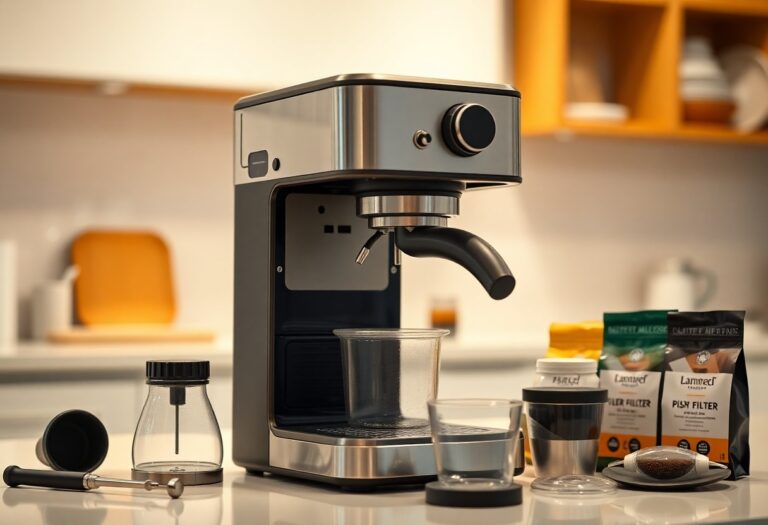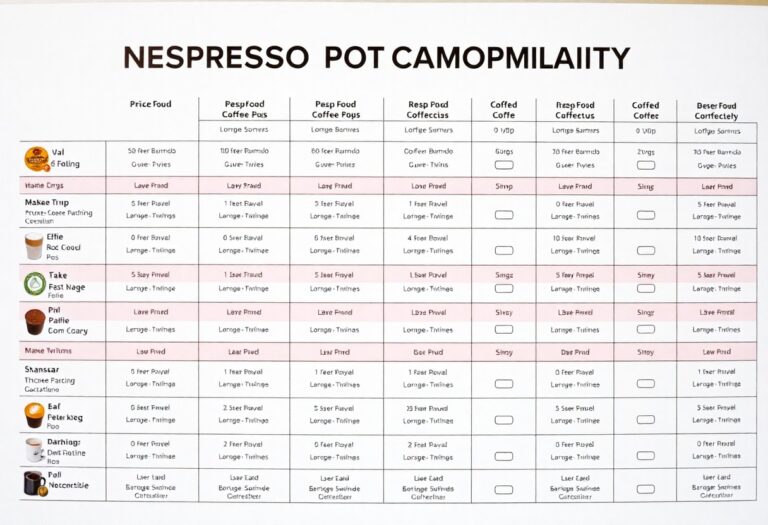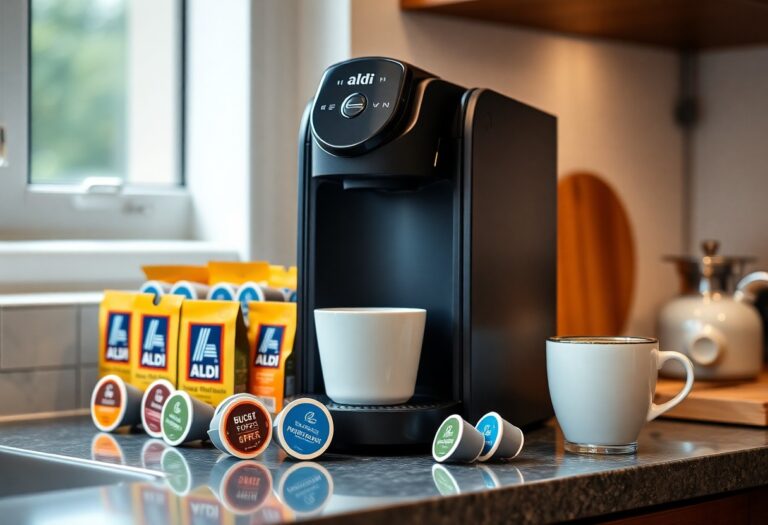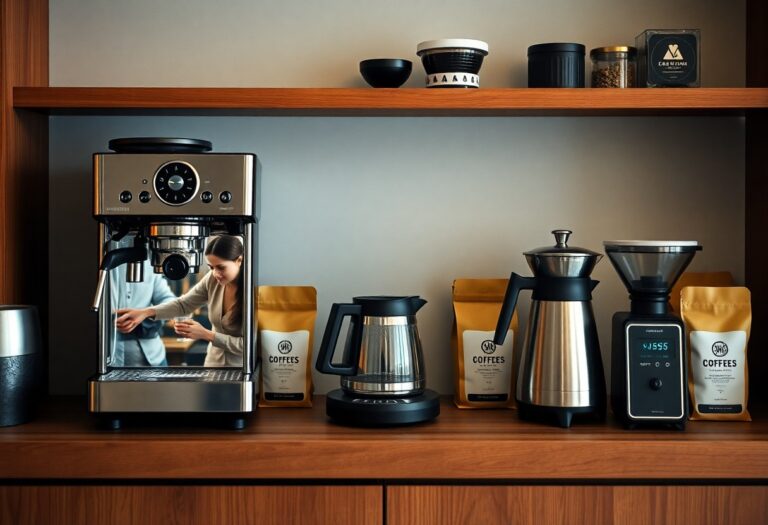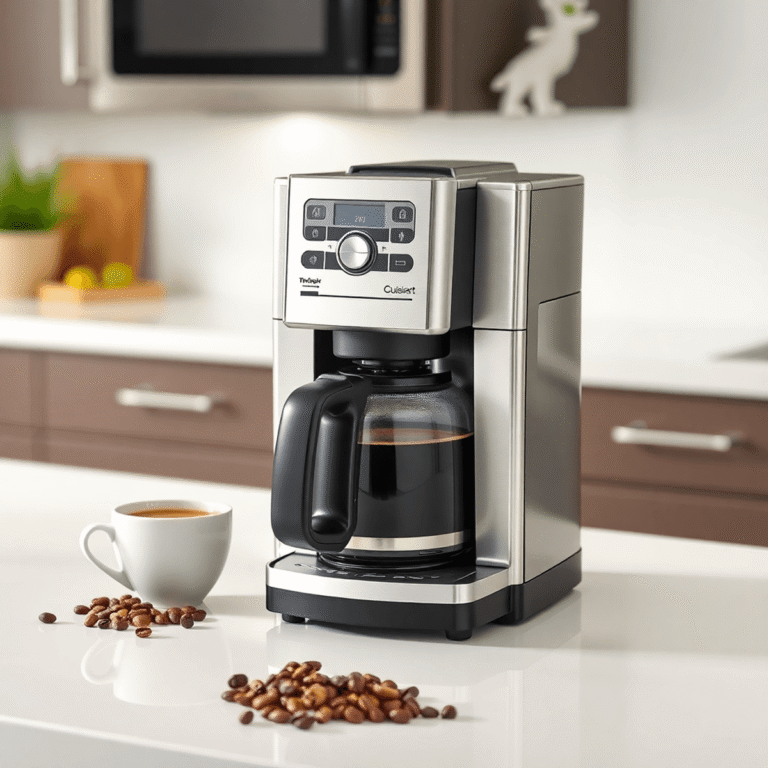What Coffee to Put in an Espresso Machine – Loading Instructions
With the right type of coffee, you can elevate your espresso-making experience to new heights. It’s important to choose high-quality, freshly roasted beans specifically suitable for espresso machines. You should look for a fine grind size that allows optimal extraction when brewing. Avoid using pre-ground coffee, as it can result in a subpar flavor profile. This guide will equip you with the necessary knowledge to select and load your coffee correctly, ensuring every cup of espresso is a delightful one.
Key Takeaways:
- Choose coffee beans specifically labeled for espresso to ensure optimal flavor and extraction.
- Grind coffee beans to a fine consistency for espresso, as this affects the brew time and overall taste.
- Use fresh coffee beans, ideally within two weeks of roasting, to achieve the best flavor in your espresso.
- Measure the right coffee dose; typically, a single shot requires about 7-9 grams of coffee, while a double shot needs 14-18 grams.
- Tamp the coffee grounds evenly and with appropriate pressure to ensure even extraction during brewing.
Selecting the Right Coffee Beans for Espresso
Having the right coffee beans makes all the difference in your espresso experience. Opt for beans labeled specifically for espresso blends, as they are formulated to provide that rich, bold flavor and creamy texture that espresso lovers crave. You’ll want to consider freshness as well; ideally, use beans that have been roasted within the last two weeks. However, don’t just focus on freshness; the variety and roast profile dramatically influence the final cup, making your selection a vital step in perfecting your espresso.
Understanding Espresso Roast Levels: Light, Medium, and Dark
Espresso can be crafted from beans roasted at varying levels, each imparting distinct flavor profiles. Light roasts often emphasize floral and fruity notes, while medium roasts offer a balanced flavor with moderate acidity. Dark roasts contribute a bold, rich character, sometimes with notes of chocolate and caramel. Your preference for roast level will significantly shape the taste of your espresso, guiding your decision on which roast aligns with your palate.
The Impact of Origin: Why Bean Geographic Characteristics Matter
The geographic origin of coffee beans plays a pivotal role in determining their flavor profile. Beans from regions like Ethiopia tend to exhibit floral and fruity characteristics, while those from Brazil showcase sweetness and nutty undertones. The climate, altitude, and soil conditions where coffee is grown contribute to these flavor nuances, making origin a key factor in your selection process.
For instance, beans cultivated in higher altitudes often mature more slowly, leading to enhanced acidity and complex flavors. Specialty coffee from Colombia is renowned for its bright acidity and caramel sweetness, while Sumatran beans are often earthier with herbal and spicy notes. Knowing the geographical nuances can transform your espresso sip into a journey across coffee-growing regions, allowing you to craft a cup that aligns with your taste preferences perfectly.

Grind Size: The Key to Perfect Extraction
The grind size of your coffee beans plays a vital role in espresso preparation and extraction quality. Finding the right particle size allows for optimal water flow and flavor extraction during the brewing process. Too coarse a grind leads to weak, under-extracted espresso, while an excessively fine grind can cause over-extraction, resulting in a bitter taste. Mastering grind size will greatly enhance the richness and complexity of your espresso shot.
Finding the Sweet Spot: Coarse vs. Fine Grind
Understanding the balance between coarse and fine grind can significantly influence your espresso’s taste profile. Aim for a grind that resembles table salt—this medium-fine consistency often strikes the perfect balance, ensuring even extraction while allowing for a rich crema. If you’re using a lighter roast, a slightly coarser grind may be beneficial, while darker roasts typically require a finer grind for optimal flavor development.
Adjusting Grind Size for Different Beans and Machines
Different types of beans and espresso machines may require specific grind adjustments. Factors like roast level, bean density, and even humidity can affect how water interacts with the coffee. For example, denser beans often need a finer grind, whereas lighter beans might perform better with a medium grind. Additionally, the type of machine you use—whether a manual lever or super-automatic espresso maker—can dictate how finely you should grind your coffee for optimal extraction.
Experimentation is crucial when adjusting grind size, as various machines extract differently. If using a manual machine, you might need to tweak the grind to achieve the desired brew time, ideally between 20 to 30 seconds for a standard espresso shot. Consider conducting small tests with different grind sizes, maintaining notes on flavor profile, body, and crema quality to determine the ideal setting for your particular bean choice and machine type.

Proportion Perfection: Coffee-to-Water Ratios Explained
Striking the right coffee-to-water ratio is vital for crafting the ultimate espresso experience. Generally, a 1:2 or 1:1.5 ratio is considered optimal for most espresso shots. This means for every gram of coffee, you’re using two grams of water for a standard espresso, or 1.5 grams if you’re aiming for a more concentrated brew. These ratios help you extract the most flavor and nuanced characteristics from your beans, ensuring every shot holds depth and richness.
The 1:2 and 1:1.5 Ratios: Finding Your Espresso Balance
In espresso, 1:2 and 1:1.5 ratios serve as the cornerstone for achieving the perfect balance of strength and flavor. The 1:2 ratio is an ideal target for a classic espresso shot, offering a balanced and rich body without overwhelming bitterness. Conversely, if you prefer a more intense and concentrated flavor, the 1:1.5 ratio allows the coffee’s inherent sweetness and unique notes to shine through while still delivering a satisfying punch.
Customizing Ratios for Diverse Flavor Profiles
Customizing your coffee-to-water ratios lets you explore a wide range of flavor profiles. If you favor fruity and bright notes, consider experimenting with a higher brew ratio, like 1:2.5, which typically extracts more acidity and sweetness. For bolder, chocolatey flavors, you might opt for a 1:1.5 ratio—enhancing the depth and richness while still keeping the balance. Your personal taste and the characteristics of the coffee beans you’re using will ultimately guide your adjustments, enhancing your espresso journey.
Playing with these ratios not only helps you discover distinct flavors but also allows for a more personalized espresso experience. Each coffee bean type will present its own unique profile based on its origin, roast level, and processing method. For instance, light-roasted beans tend to benefit from a higher water-to-coffee ratio, while darker roasts can handle a more concentrated approach. As you refine your technique, take notes on how minor adjustments impact flavor, paving the way for exquisite coffee moments tailored exclusively to your palate.
The Art of Tamping: Creating Optimal Pressure
Effective tamping is key to achieving the perfect espresso shot. This technique involves compressing the coffee grounds evenly to create consistent resistance against the water, resulting in enhanced flavor extraction. The right pressure, typically around 30 pounds, leads to a rich and harmonious espresso. Achieve a balanced shot with both body and crema by putting thought and care into your tamping method.
Techniques for Tamping: Firmness and Technique
Achieving the right firmness during tamping can make all the difference in your espresso. Utilize a firm and even pressure, engaging your shoulder rather than just your hand, to ensure a uniform distribution of force. Aim for a smooth, level tamp across the entire coffee puck, avoiding any tilt or unevenness, which can lead to variable extraction and undesirable flavors in your brew.
Common Tamping Mistakes to Avoid for Improved Extraction
Avoiding common tamping mistakes can significantly enhance your espresso’s quality. Failing to tamp evenly, applying inconsistent pressure, or neglecting to assess the puck’s level can lead to channeling—a phenomenon where water flows unevenly through the coffee, causing poor extraction and off-flavors. Ensure your technique promotes uniform resistance to allow for optimal flavor development.
When tamping, one of the biggest pitfalls is rushing the process. Not giving yourself enough time to achieve an even, level tamp can lead to an uneven coffee bed, resulting in some areas being over-extracted while others are under-extracted. This imbalance compromises the overall taste and quality of your espresso. Additionally, lifting the tamper too quickly can disrupt the grounds, leading to a poorly set puck. Give each tamp the attention it deserves to ensure your espresso reflects the care you put into it.
The Brewing Process: Timing and Temperature Essentials
Mastering the brewing process elevates your espresso game. Timing and temperature are fundamental to achieving the rich flavor and silky texture you desire. You need to pay close attention to both, as they can significantly affect the extraction process and the ultimate taste of your shot.
| Timing | Temperature |
|---|---|
| Optimal shot time: 25-30 seconds | Ideal brewing temperature: 90-96°C (194-205°F) |
| Shorter times lead to under-extraction | Inconsistent temperatures can result in bitter flavors |
Ideal Brewing Times: How Long Should Your Espresso Run?
Your espresso shots should ideally run between 25-30 seconds for the perfect extraction. Shots that run shorter may be under-extracted, leading to a sour taste, while those that take longer can become bitter. Adjust your grind size or tamping pressure if you’re not hitting this target consistently.
The Role of Temperature in Espresso Quality
Temperature plays a vital role in developing the flavors and aromas of your espresso. The ideal brewing temperature ranges from 90-96°C (194-205°F). If the temperature is too low, under-extraction occurs, and flavors turn sour; too high, and you risk bitterness. Consistency in temperature ensures that you can replicate great shots.
| Temperature Impact | Effects on Flavor |
|---|---|
| Below 90°C | Results in sour, under-extracted espresso |
| Above 96°C | Yields bitter, over-extracted espresso |
Summing up
Presently, when selecting coffee for your espresso machine, focus on high-quality, freshly roasted beans with a fine grind that matches your brewing method. Ensure you measure your coffee accurately, typically around 18-20 grams for a double shot, and tamp it evenly for optimal extraction. Pay attention to the roast date and choose blends or single origins that cater to your taste preferences. Following these guidelines will enhance your espresso experience, allowing you to create a rich and flavorful cup every time.
FAQ
Q: What type of coffee beans should I use in my espresso machine?
A: For optimal espresso extraction, it’s recommended to use high-quality, finely ground coffee beans that are specifically labeled for espresso. Arabica beans are popular for their rich flavor, while Robusta can add a crema and stronger taste. It’s best to avoid pre-ground coffee, as fresh ground coffee enhances flavor and aroma significantly.
Q: How fine should I grind the coffee for my espresso machine?
A: The grind size for espresso should be very fine, similar to table salt or slightly coarser. A fine grind increases the surface area, allowing hot water to extract the flavors more efficiently during brewing. Experimenting with grind size can help achieve your desired flavor profile, so adjusting finer or coarser based on taste is often necessary.
Q: How much coffee should I use per shot of espresso?
A: The standard amount for a single shot of espresso is about 7-9 grams of ground coffee, while a double shot typically uses 14-18 grams. This is a general guideline, and you may find that adjustable amounts work better for your taste preferences. Always use a scale for precision when measuring your coffee.
Q: How do I load coffee into the espresso machine’s portafilter?
A: After grinding your coffee beans to the appropriate consistency, place the ground coffee into the portafilter basket. Use a tamper to press the grounds evenly and with consistent pressure, aiming for around 30 pounds of pressure. This compresses the coffee, promoting a better extraction during brewing. Ensure the coffee bed is level and free of clumps to avoid uneven extraction.
Q: What should I do if my espresso machine is not producing good espresso?
A: If your espresso lacks flavor or has poor crema, check your coffee grind size, dose, and tamping technique. Ensure you’re using fresh coffee, as old beans can adversely affect taste. It’s also important to check the water temperature and pressure settings of your machine, as these factors play a significant role in the extraction process. Cleaning your machine regularly can also help maintain the quality of your espresso.



